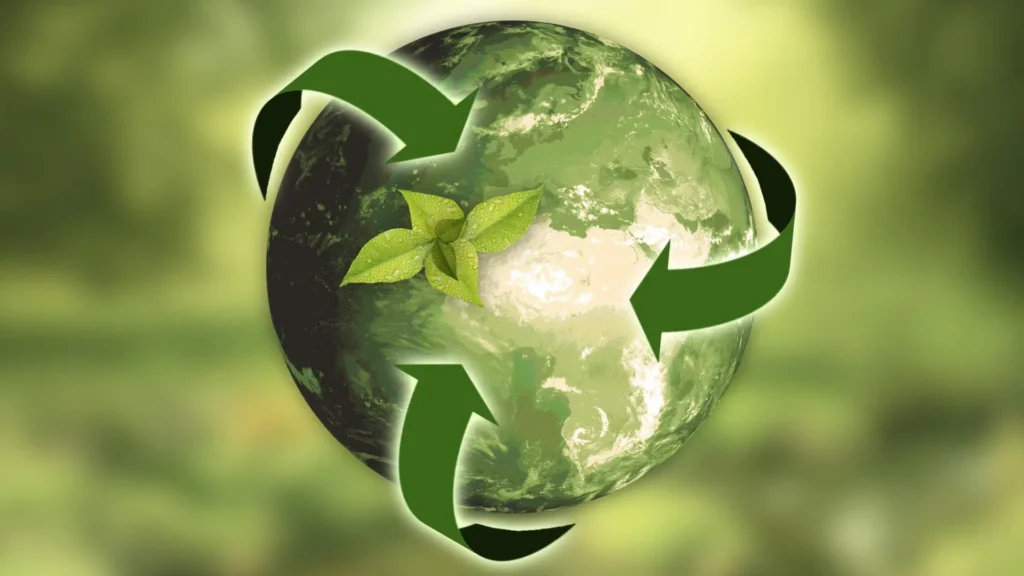Circular Economy and the Vital Role of Renewable Energy Assets

In an era defined by environmental challenges and the pressing need for industrial decarbonization, the concept of the circular economy takes center stage. It is imperative for us to understand the symbiotic relationship between the circular economy and renewable energy assets. Here, I delve into how renewable energy assets play a pivotal role in advancing the circular economy, fostering sustainability, and mitigating climate change.
Circular Economy: A Sustainable Paradigm Shift
The circular economy represents a seismic shift from the linear “take-make-dispose” model to a regenerative system aimed at minimizing waste and maximizing the use of resources. It promotes the continual use, refurbishment, remanufacturing, and recycling of materials and products, drastically reducing the environmental impact of industrial processes.
The Role of Renewable Energy Assets in the Circular Economy
1. Clean Energy Production: Renewable energy assets, such as wind turbines, solar panels, and hydropower plants, are the cornerstones of a circular economy. These technologies harness clean, limitless energy from natural sources without depleting finite resources or emitting greenhouse gases. By displacing fossil fuels, they contribute significantly to reducing carbon emissions, a fundamental goal of the circular economy.
2. Resource Efficiency and Sustainability: Renewable energy technologies require various materials, including metals, semiconductors, and polymers. Embracing circular economy principles means designing these technologies for durability and recyclability. At the end of their life cycles, renewable energy assets can be disassembled, and materials can be recovered and reintegrated into the manufacturing process, reducing the need for virgin resources.
3. Circular Battery Systems: Energy storage, a crucial component of the renewable energy landscape, also plays a pivotal role in the circular economy. Circular battery systems involve designing batteries for longevity, easy maintenance, and eventual recycling. Used batteries can be repurposed for secondary applications or safely recycled to recover valuable materials, reducing waste and conserving resources.
4. Sustainable Infrastructure: The development and operation of renewable energy projects necessitate significant infrastructure investments. Circular economy principles can guide the design and construction of these projects, ensuring minimal environmental impact and facilitating end-of-life asset management. Decommissioned wind turbines, for example, can be disassembled, and components can be refurbished or recycled.
Realizing the Circular Economy in Renewable Energy
Leading companies are committed to actively contributing to the circular economy. Here are some key initiatives that reflect their dedication to sustainability:
1. Product Innovation: They prioritize the development of renewable energy assets that are designed for longevity, performance optimization, and ease of maintenance. This approach extends the operational life of the products and reduces the frequency of replacement, aligning with circular principles.

2. Material Recycling: They are actively participating in repairing, recovering, and refurbishing materials from renewable energy assets. Their operational sites are repaired or refurbished, reused, or recycled to reduce life cycle environmental impacts. By doing so, they can reduce the environmental footprint associated with raw material extraction and contribute to a more circular supply chain.
3. Collaborative Partnerships: They collaborate with research institutions, industry partners, and local communities to drive sustainability and circular economy practices. This includes community engagement initiatives that promote recycling, as well as research efforts aimed at developing eco-friendly materials and technologies.
4. Sustainable Operations: In their day-to-day operations, these companies prioritize sustainability, from energy-efficient office spaces to responsible waste management practices. They lead by example, demonstrating the commitment to the circular economy not only in their products but also in their corporate culture. Another good idea is also to compost the food waste at corporate offices thereby minimising landfill waste and reducing the GHG emissions.
Conclusion

In the quest for a sustainable future and industrial decarbonization, the circular economy and renewable energy assets are indelibly linked. As we champion the transition to cleaner, more efficient energy systems, we must recognize the profound role that renewable energy assets play in advancing circular economy principles. Together, we can lead the charge toward a circular, sustainable, and decarbonized future, where renewable energy is both a catalyst and a symbol of responsible resource management. By embracing the circular economy and leveraging the potential of renewable energy assets, companies like Re Sustainability, Greenko, and ReNew are reaffirming their commitment to providing innovative solutions that pave the way for a greener, more sustainable world, setting the standard for a brighter future for generations to come. Let’s embrace these!
– Dr. Sailaja is a seasoned HR leader, guest speaker, and enthusiast of sustainable practices.






